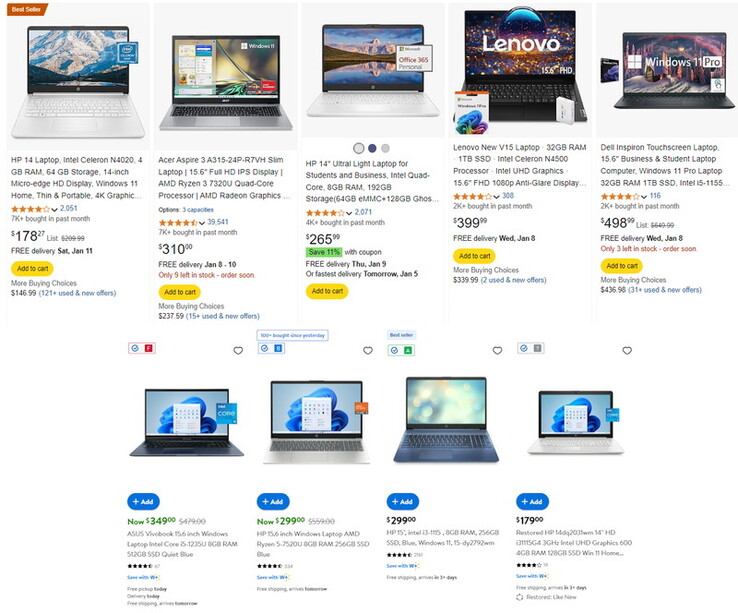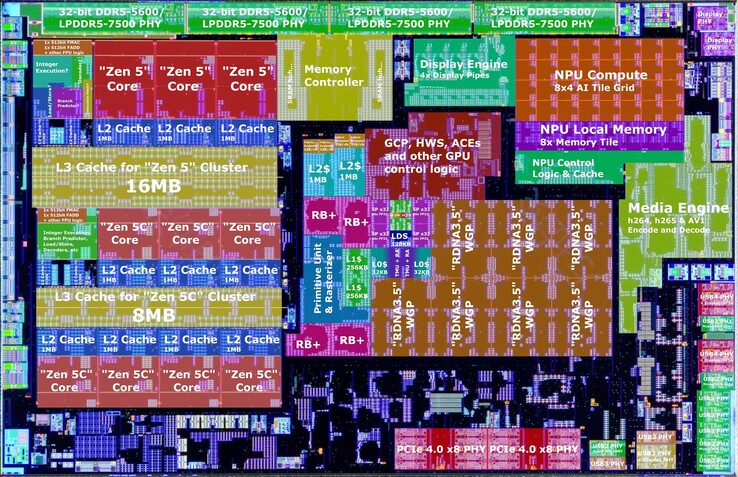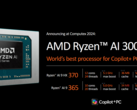You know you're in laptop-shopping purgatory when they stop naming the CPUs.
"Latest Quad-Core Processor". "High Performance Intel Processor". "Beats i7-8550U."
Product listings that are clearly embarrassed about naming their specification. 768p or 900p displays that brand themselves as "HD+" and hope you don't notice. Memory in awkward configurations that range from awkward to dire - 12 GB, 6 GB, 4 GB. Storage that uses eMMC instead of a proper solid state drive, or tries to inflate its size by bundling a microSD card with the buy.
All of these will probably sound familiar if you're used to dodging the minefield that is entry-level laptops, especially over the holiday season. It's not hard to notice that below a certain point, the quality of what you're getting falls off dramatically - a pricing event horizon, beyond which there is little available but e-waste trying to pass itself off as being better than it really is. By and large, it makes sense, with less wiggle room between the sale price and the bill-of-materials component cost meaning more corners being cut.
Well, what happens when that component cost goes up?
Intel's last few generations of mainstream mobile processors haven't gone below Ultra 5s; AMD's Strix Point never even bothered going below the Ryzen AI 9 tier. But looking at Intel's own datasheets, 2023's Core Ultra 5 125U is priced at $363 - the bulk price for Intel's manufacturing customers - meaning that once you factor in a display, memory and storage, a few luxury extras like wireless connectivity and a battery, plus a margin for both those manufacturers and the retailer you're buying it from...
That pricing event horizon is starting to look awfully high.
The point-of-no-return that used to be around $500, or €/£450, has now shot up dramatically. A brief search on Amazon US with a price limit filter set to $700 throws up plenty of laptops with Intel's 11th or 12th gen processors and a handful of Ryzen models - along with one very bold seller attaching "AI Powered" to a dual-core Celeron N4500. A look at other retailers at least offers more variety, yet the most recent chips seemingly available in that price range are 2023's Core Ultra 100 series.
This is the elephant in the room: previous generations of CPUs are hanging around for shelves longer and longer. For a while it seemed like it was just a matter of clearing out inventory, but these days it seems like a reliance on silicon from yesteryear - heck, often from 2021 or earlier - to provide for budget buyers.
Intel's 11th gen chips are still popping up despite being discontinued early last year, and while their now-modest performance is to be expected for the price, their power draw when placed under any real load chews through batteries at a frustrating pace, a flaw shared by their 12th and 13th gen successors. AMD's Ryzen 5000 series are efficient and performant enough to stay relevant, with both the Ryzen 3 5300U and Ryzen 5 5500U being diamonds-in-the-clearance-bin for a while now, but their onboard Vega graphics were put on the road to retirement over a year ago and their end-of-life is rapidly looming. And to top it all off, the ongoing debacle with Windows 11 uptake shows just how readily Microsoft is willing to arbitrarily cut off older hardware for the heinous crime of being, well, old.
The most frustrating thing here is that the decline isn't due to a lack of technical solutions. Both AMD and Intel have demonstrated their ability to design highly efficient and compact cores and integrated them heterogenous CPU designs. Both will well be aware of the economics of silicon manufacturing - that smaller dies made using space-efficient cores produce higher yields and lower costs - and that NPUs and ever-bigger integrated graphics for their "headline" offerings is pushing up die size, all while the costs of manufacturing each silicon wafer are also going up. Yet both, to date, have yet to really follow through with a cheap, no-frills design, one that's highly capable for content consumption and basic productivity but doesn't bother with lofty ambitions of content creation or on-the-go gaming.
There's a lot of room for something in-between a $363 Ultra 5 and a $55 N100. Maybe 2025 is the year someone gives it a proper go.















